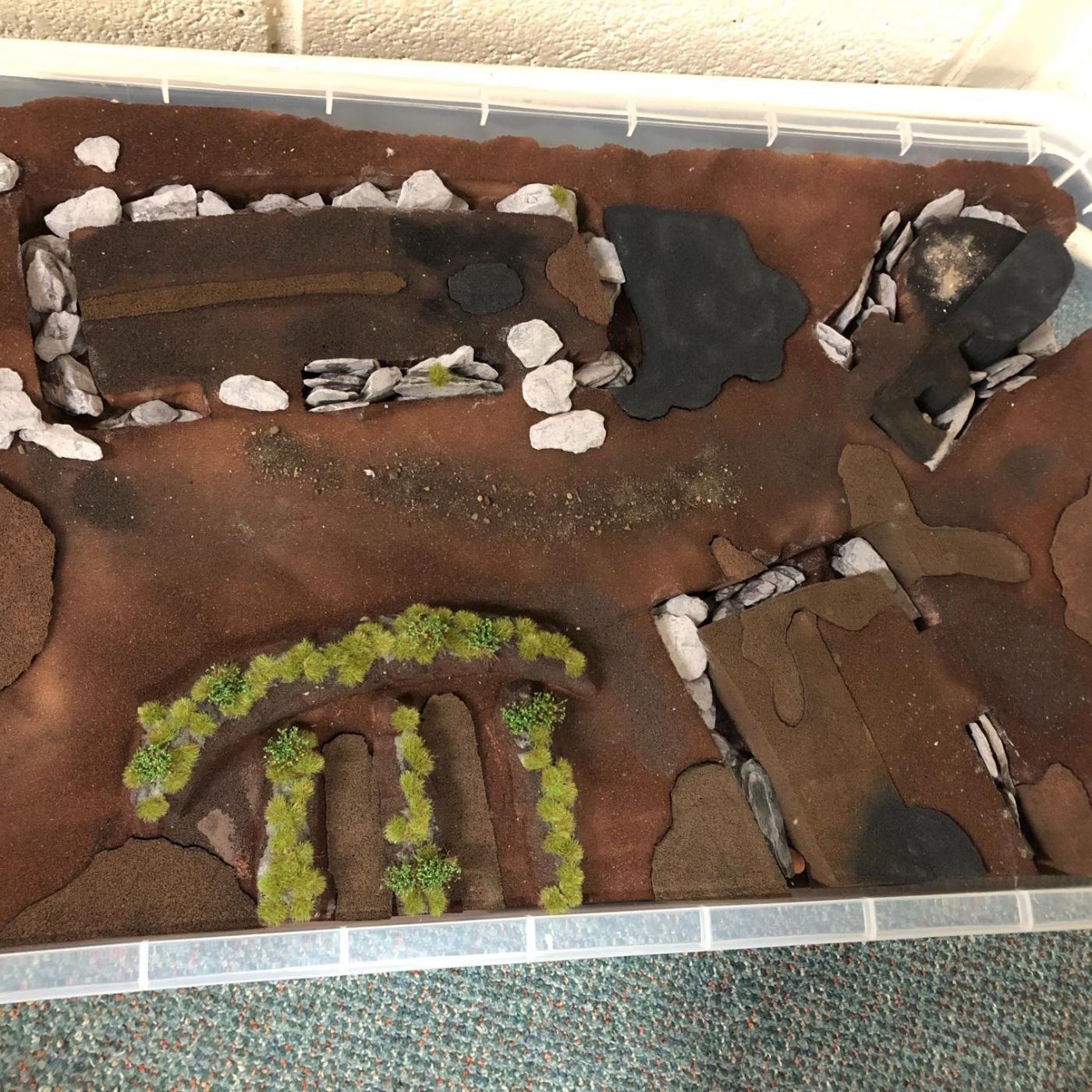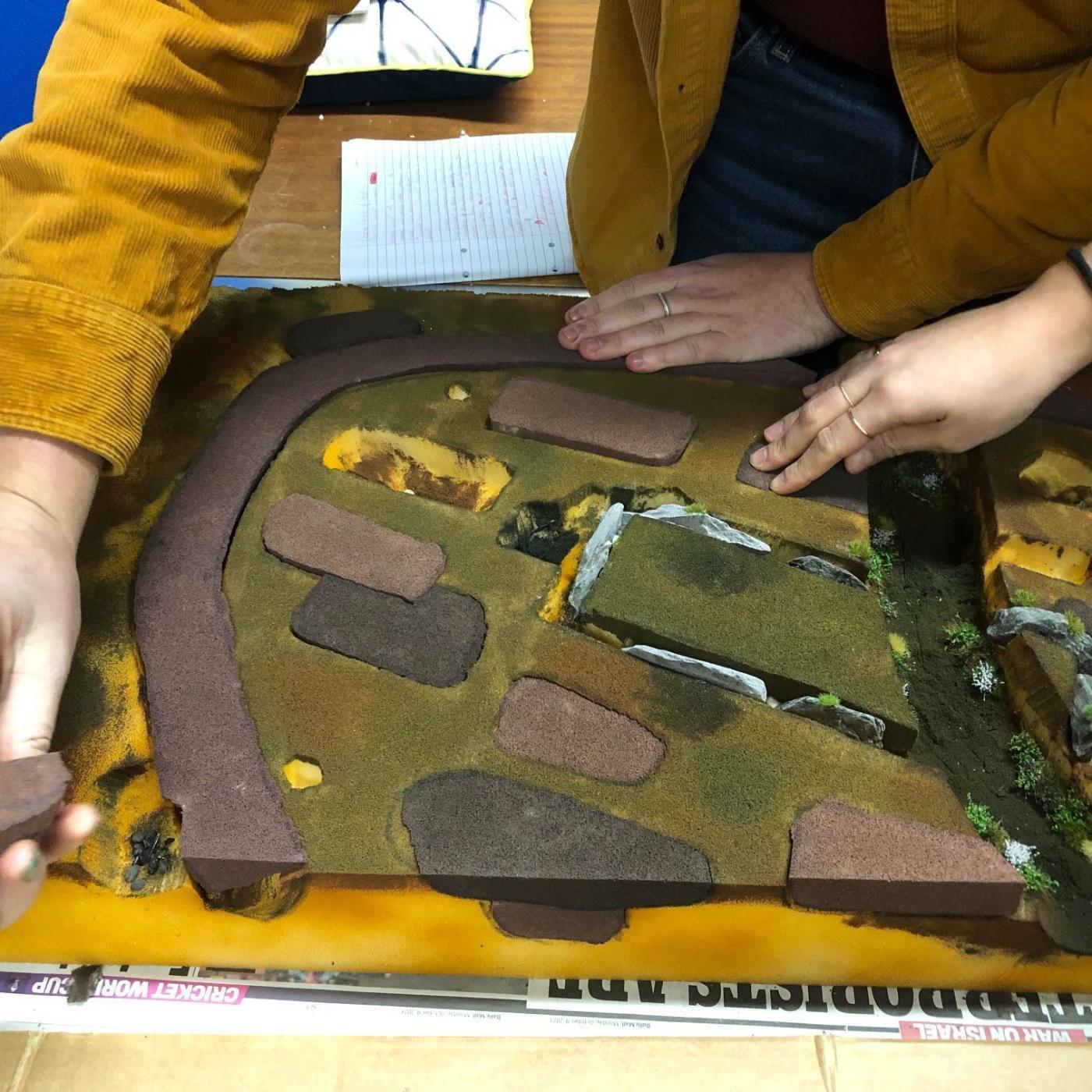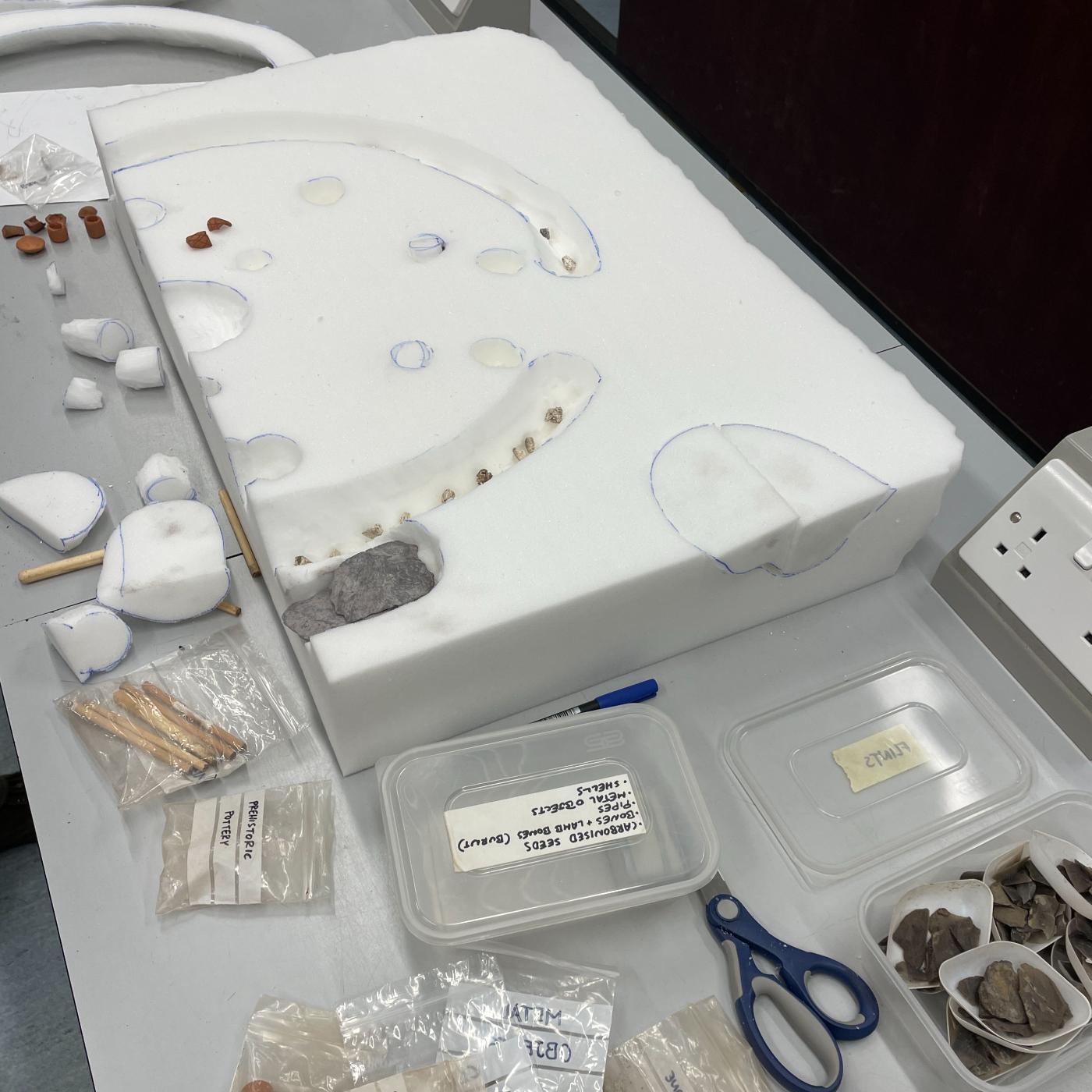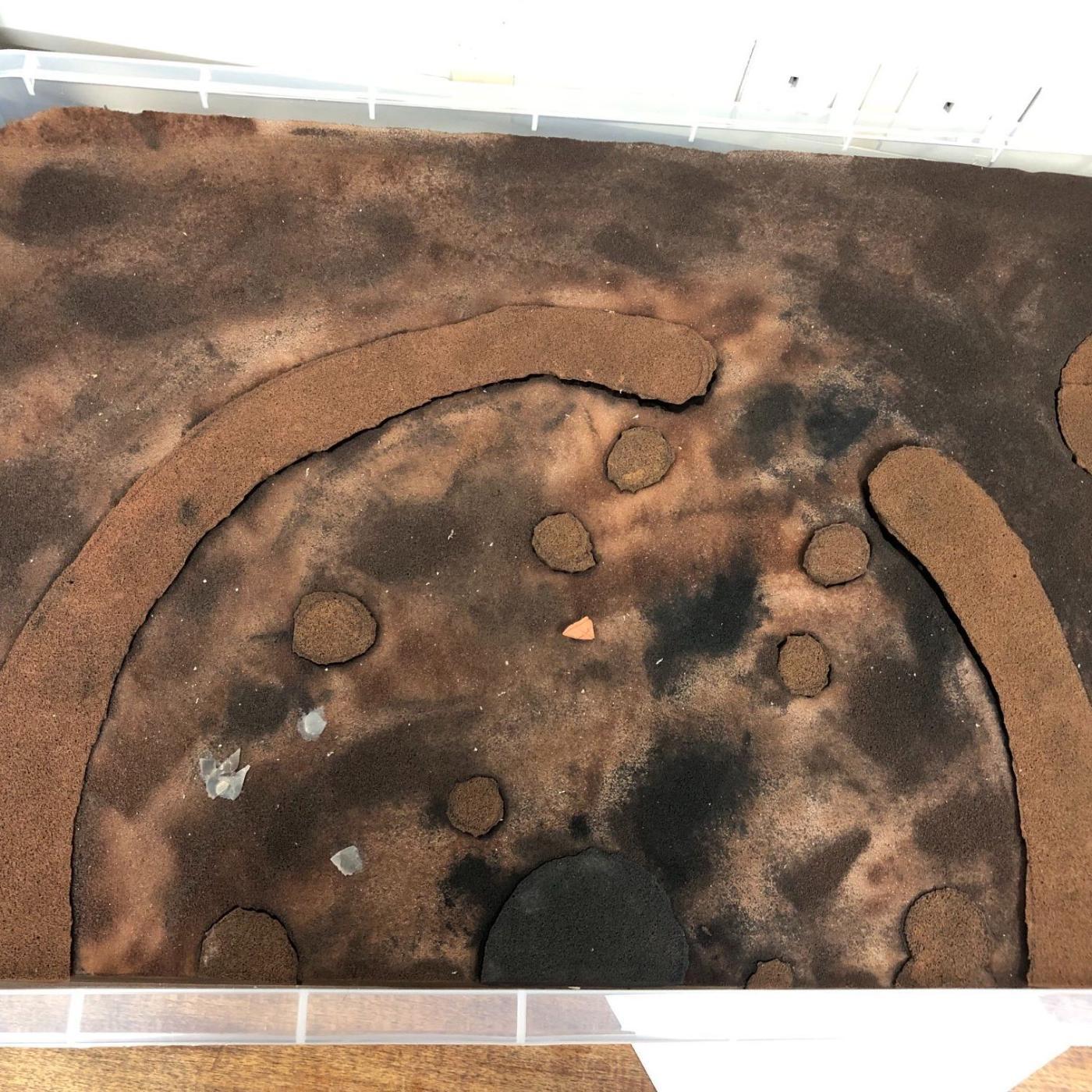Archaeology Theory in Practice Course - Level 2
Published: 24 June 2024
New resources to help students understand the way that archaeological sites are formed
In order to create more sustainable and engaging teaching materials for our level 2 Archaeology Theory in Practice course, Louisa Campbell developed new resources to help students understand the way that archaeological sites are formed and the types of issues that impact them over time. These involved creating archaeological micro-site that can be deconstructed and rebuilt from foam designed to depict archaeological features, deposits, artefacts, different layers and contexts to be visible and actively engaged with to recreate realistic, diverse, sites on more than one level and covering different time periods.
Graduate Teaching Assistants (Eddie Stewart, Gala Morris, Nysa Louden, Yasaman Mazloumi and Alexandra Farrell) took that concept to a whole new level and threw themselves fully into the project by engaging their crafting skills to find incredibly creative and imaginative ways to design, paint, and set out the micro-sites and provide background information to help students understand the complex processes and transformations that impacted them.
The GTAs completely transformed plain white and blue blocks of foam into vibrant, colourful and wonderfully engaging resources that will be used by students for many years to come and allows them to experience genuine features and recording protocols using sustainable and reusable materials. They were also a huge amount of fun to create and use in lessons!




First published: 24 June 2024
<< Latest news

